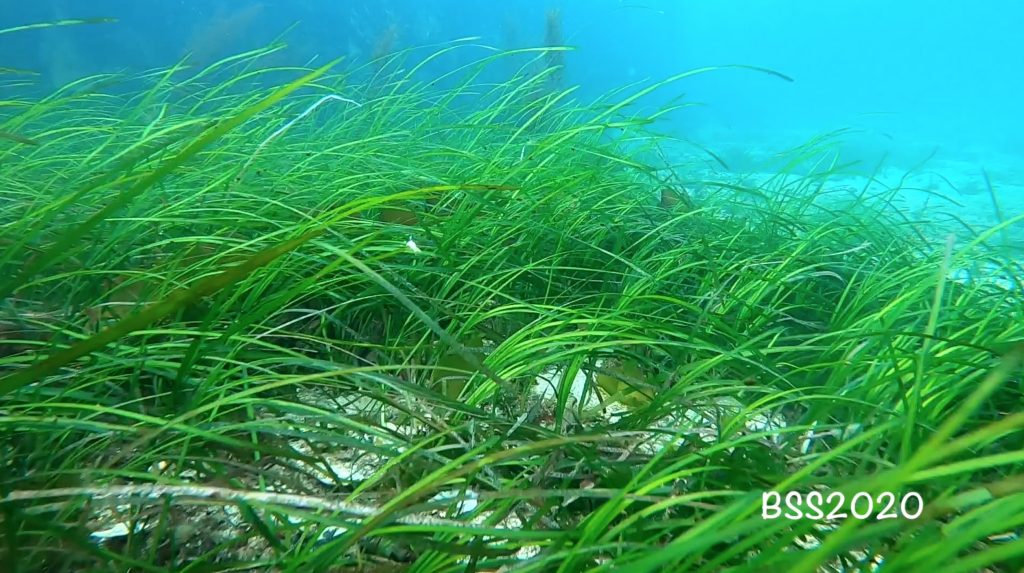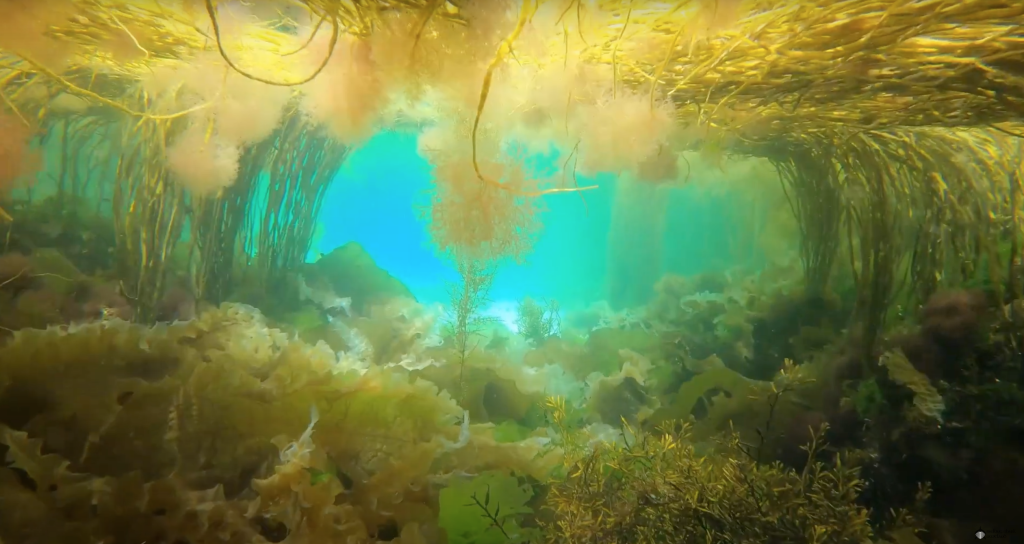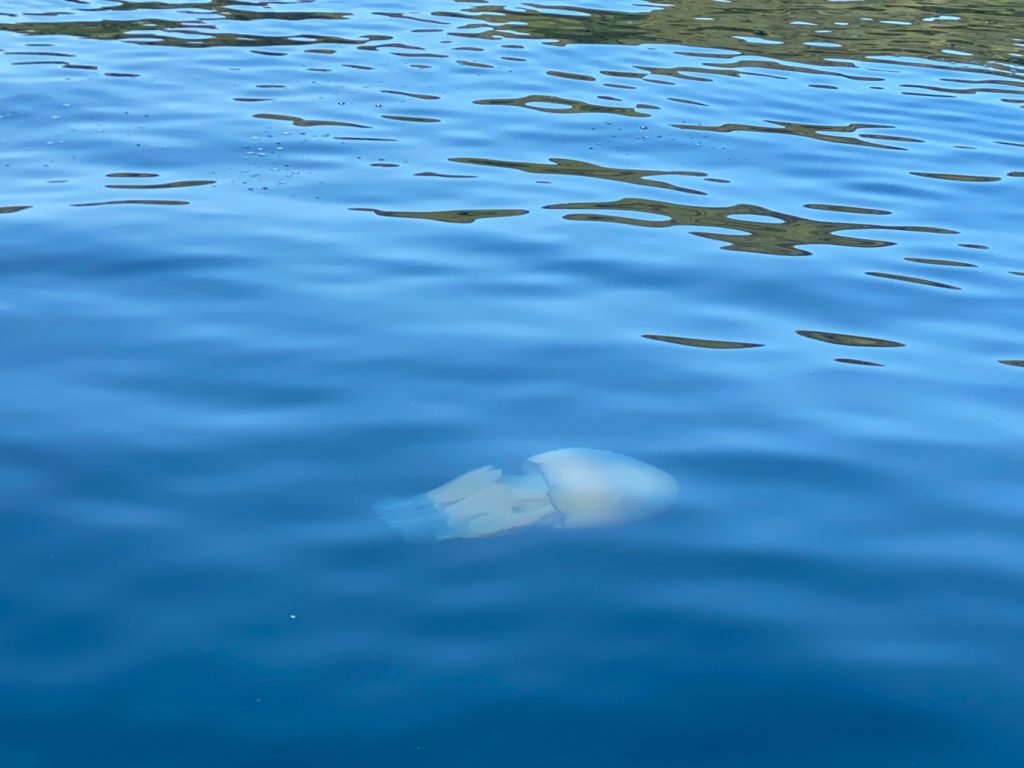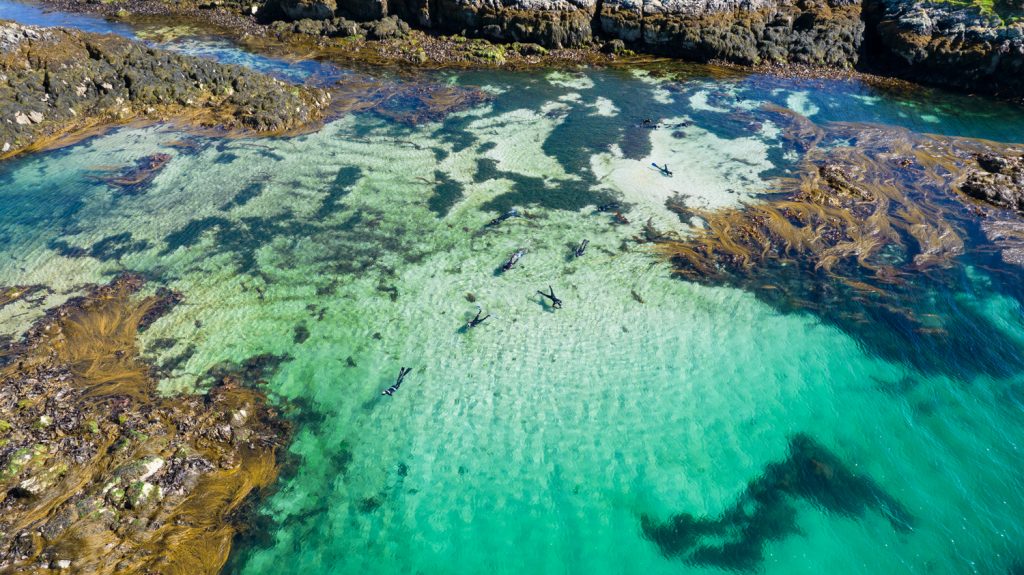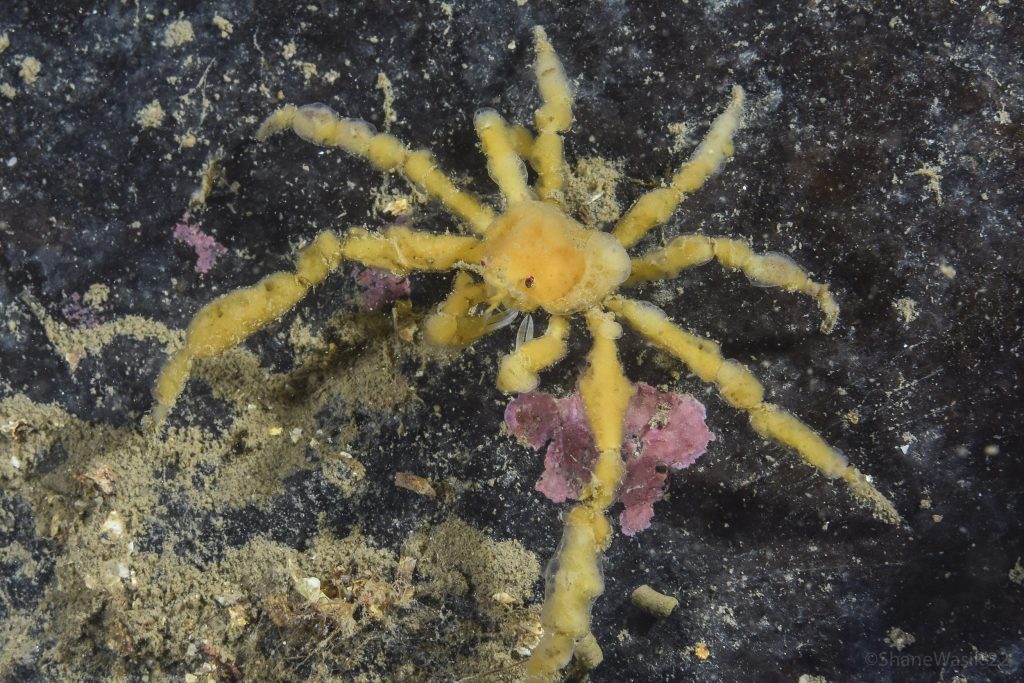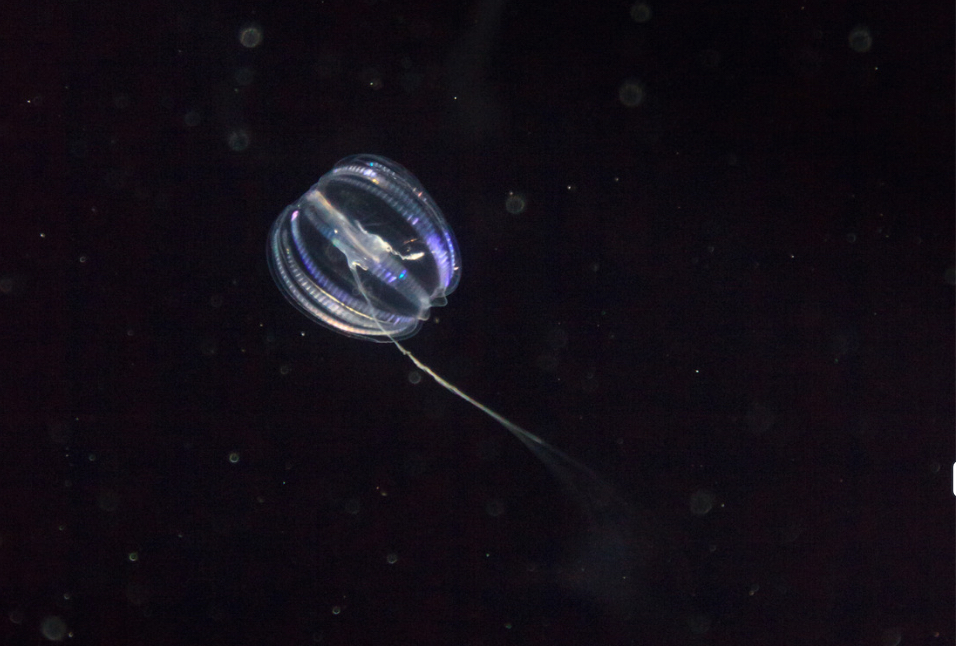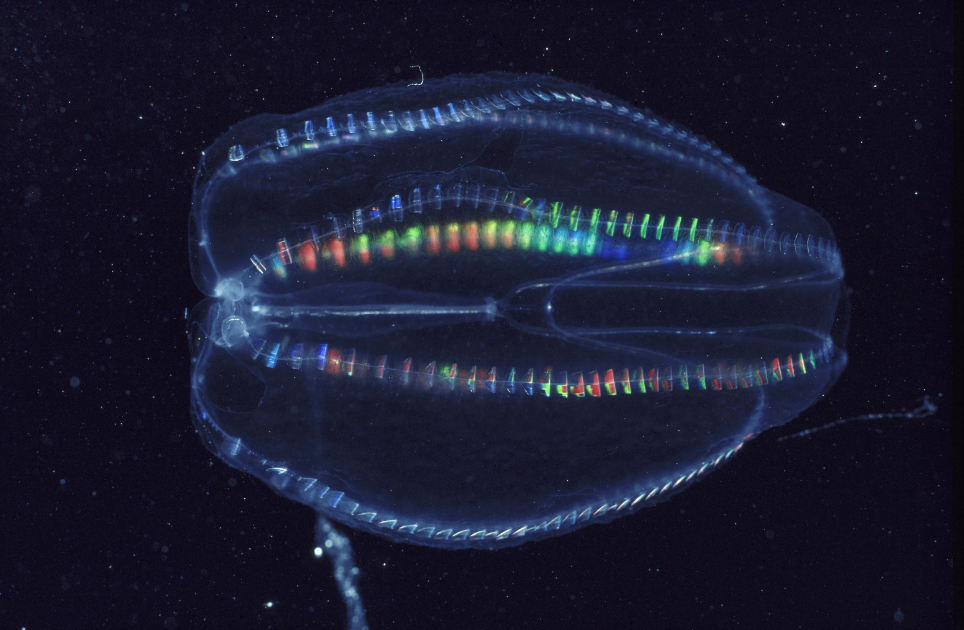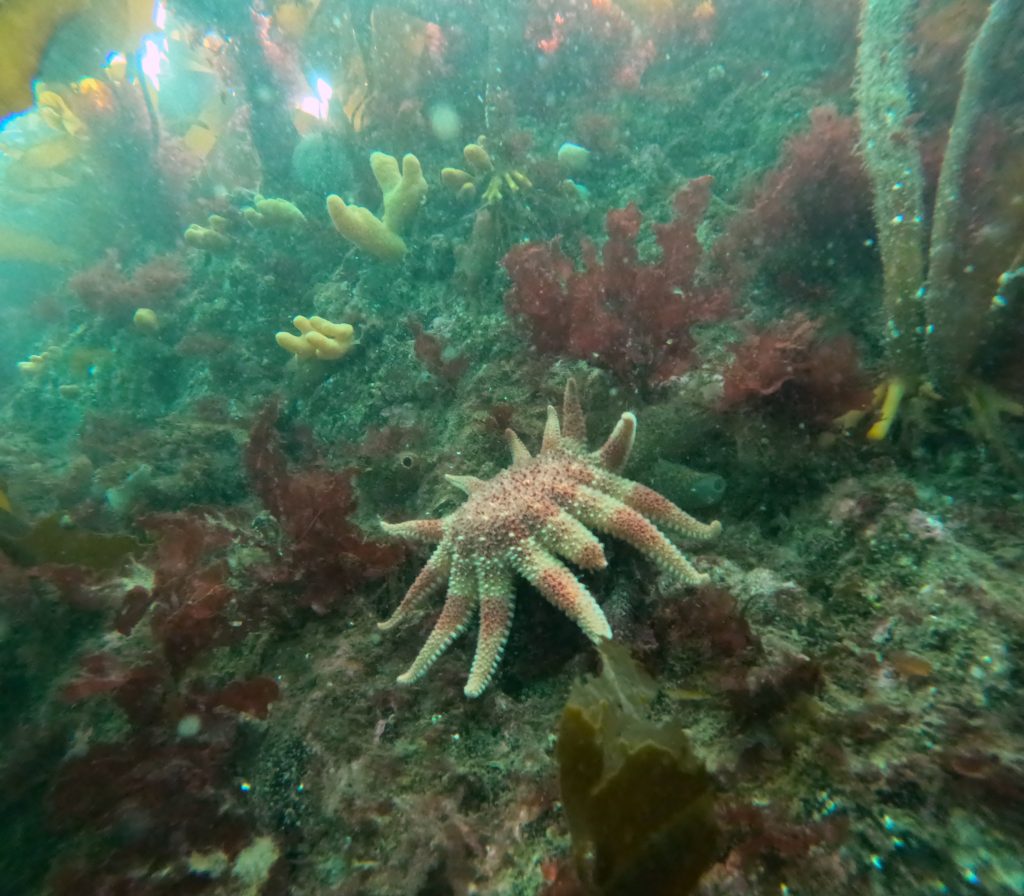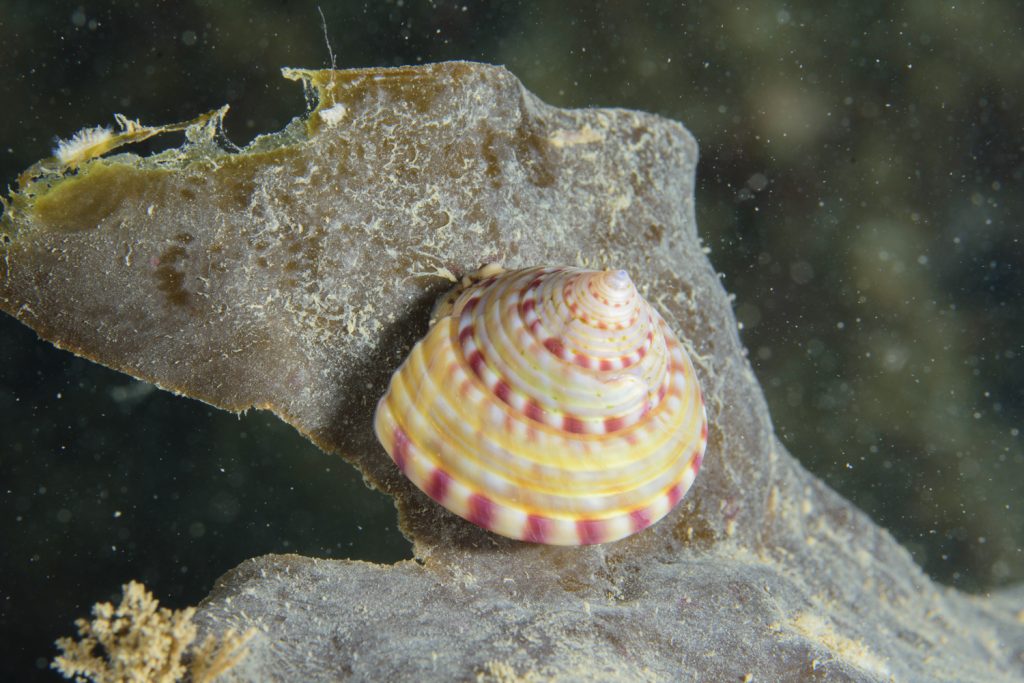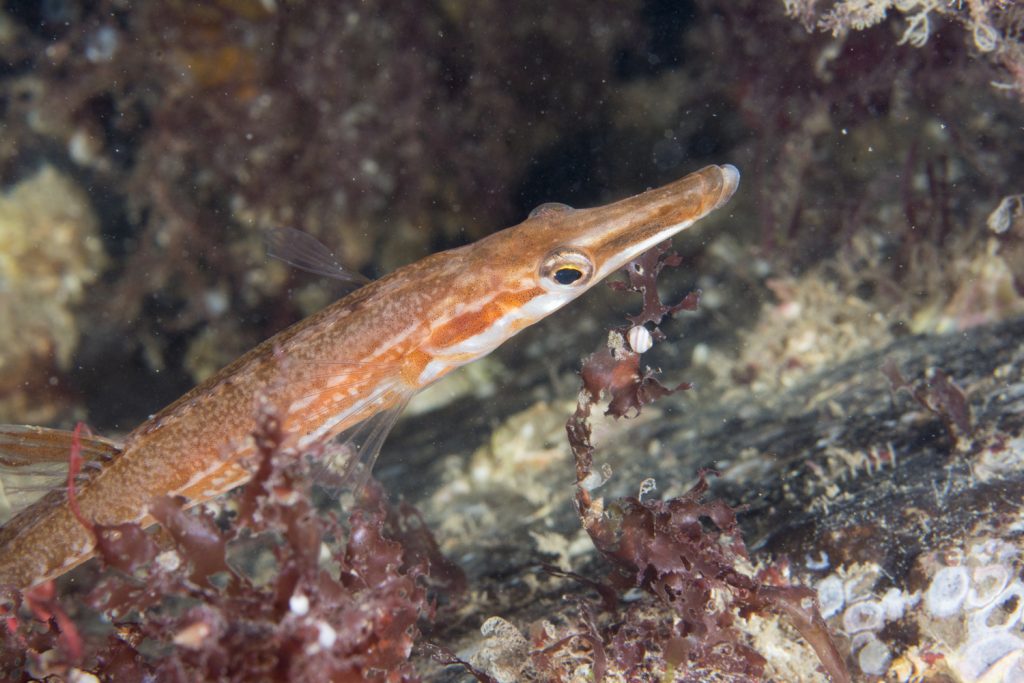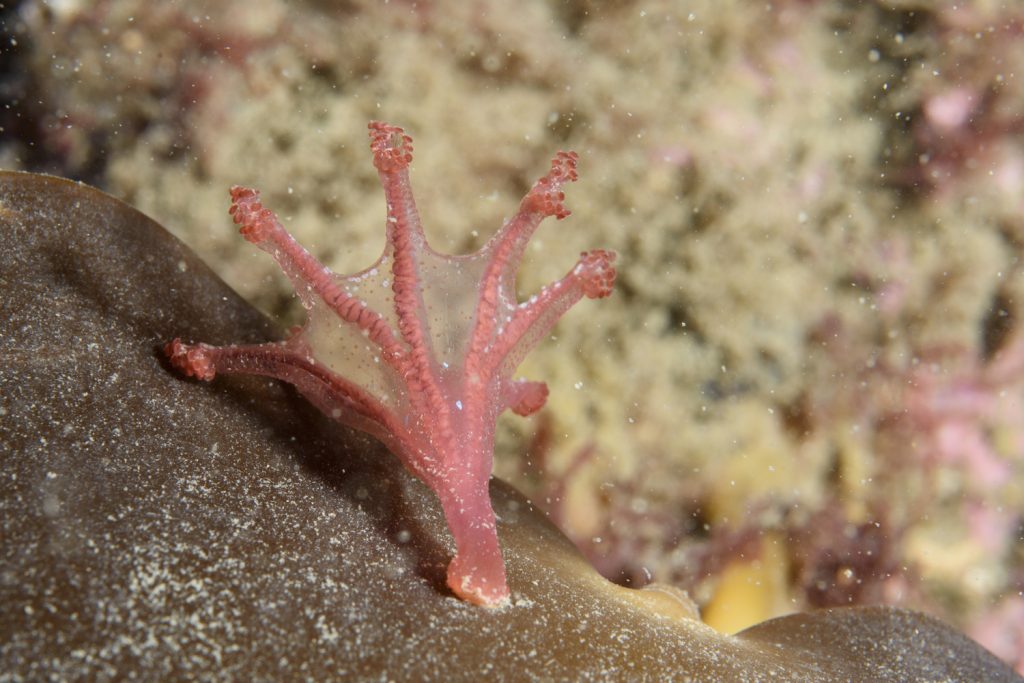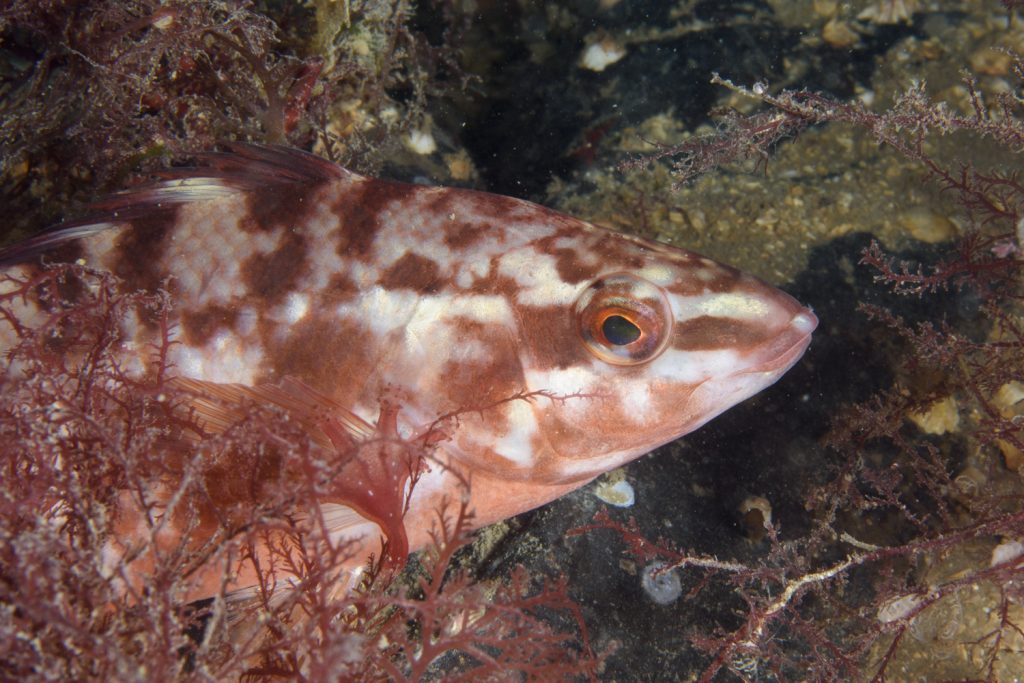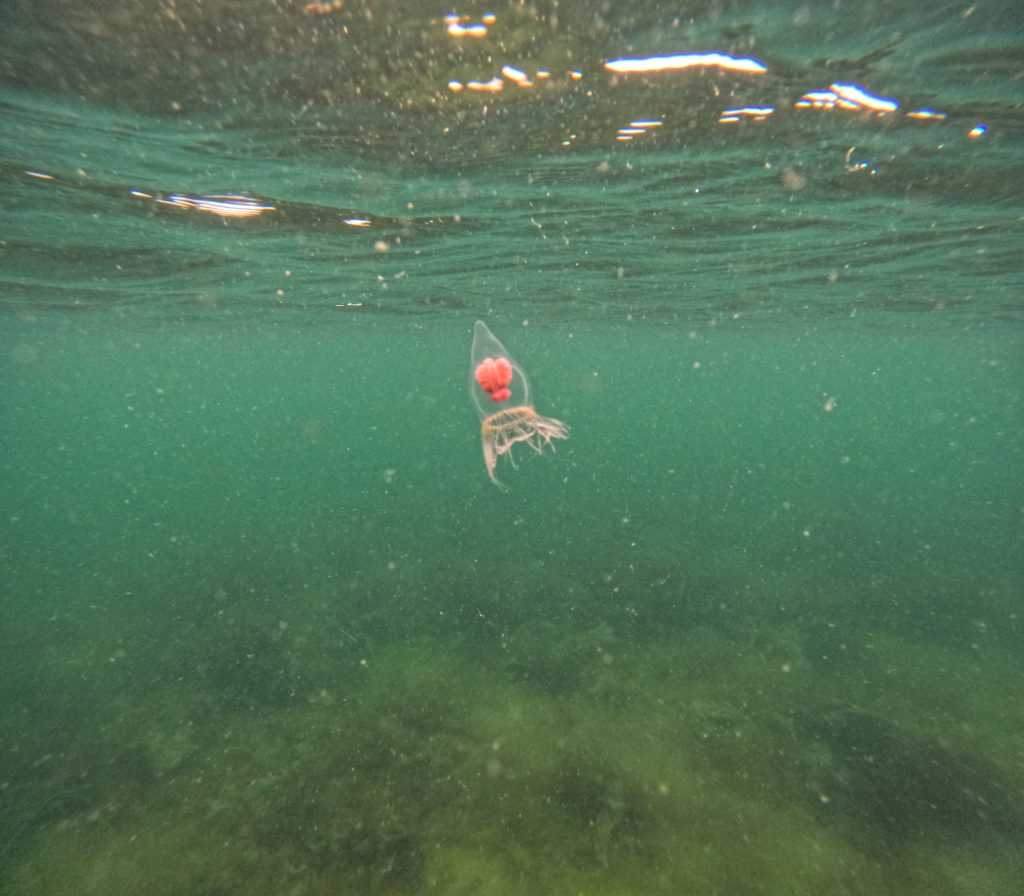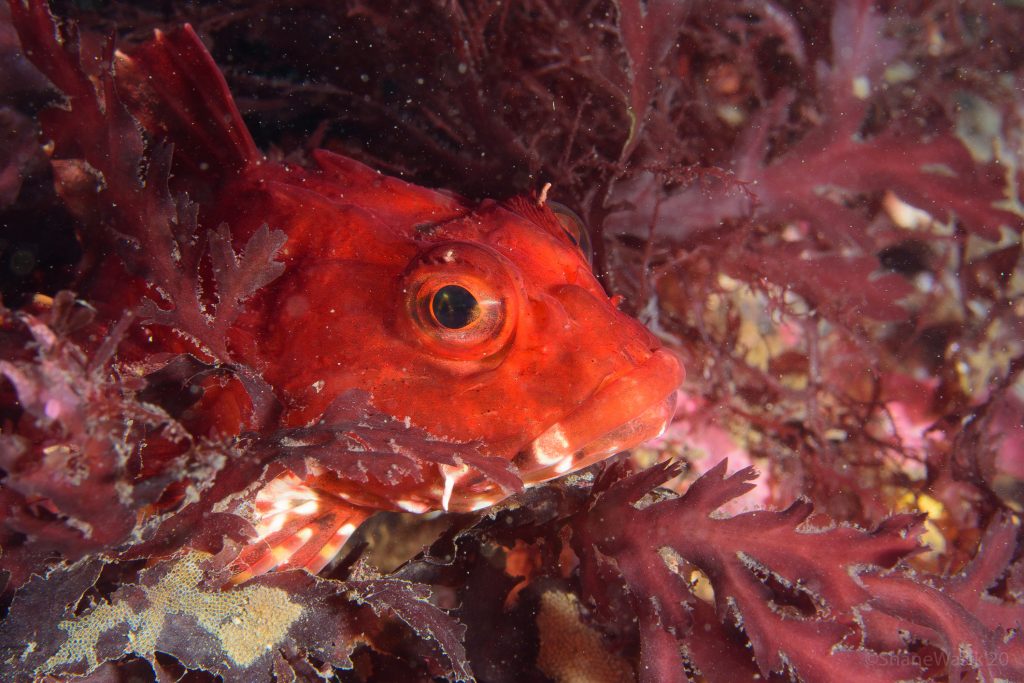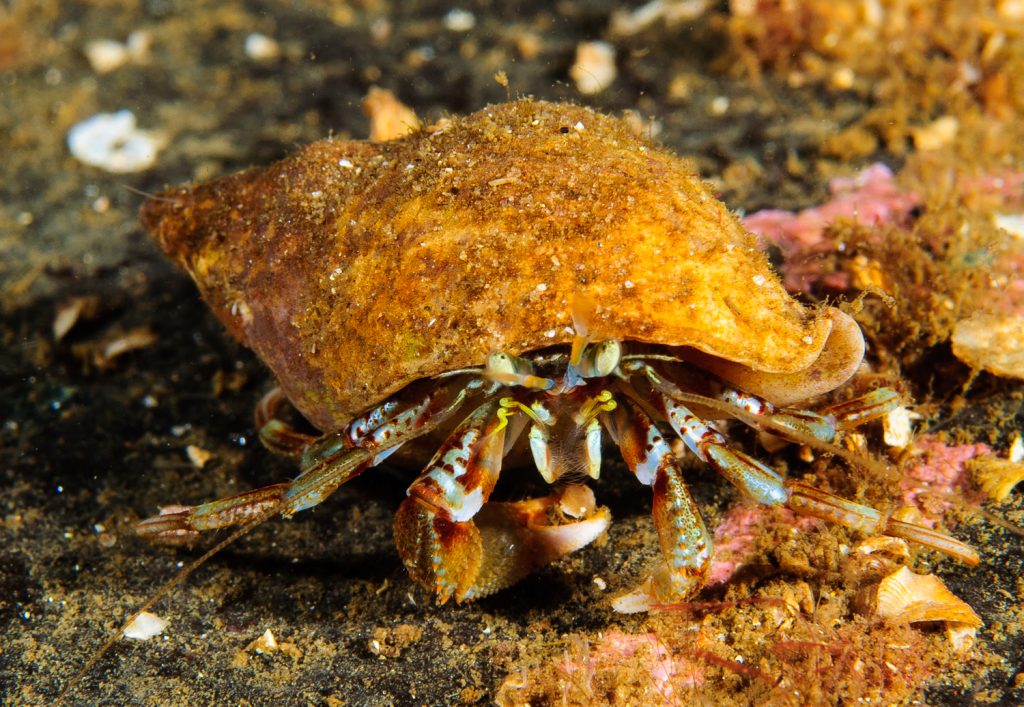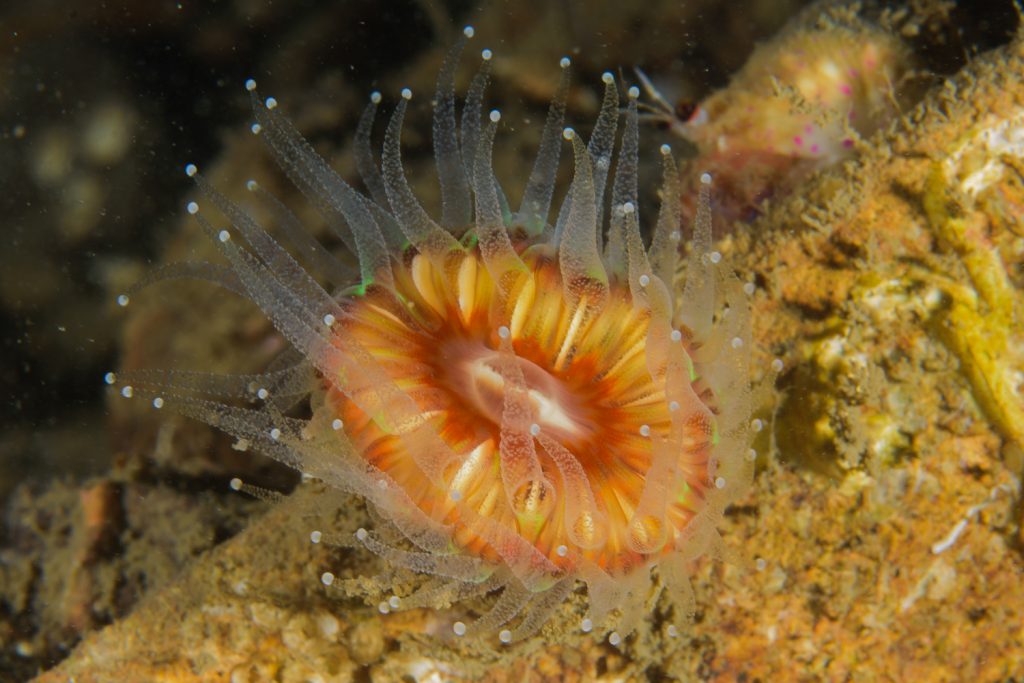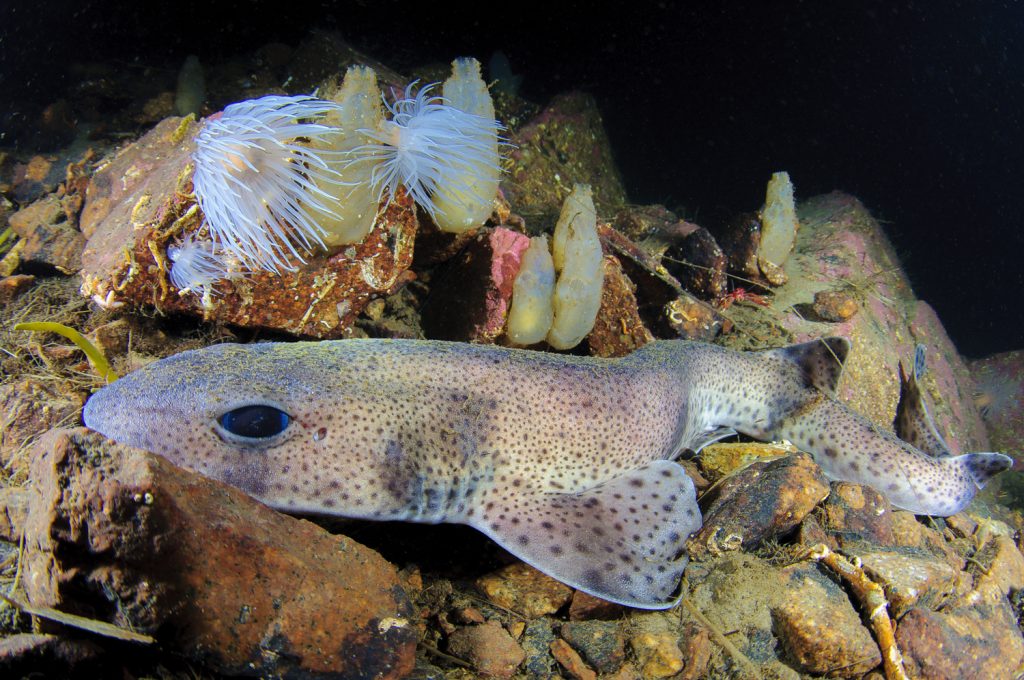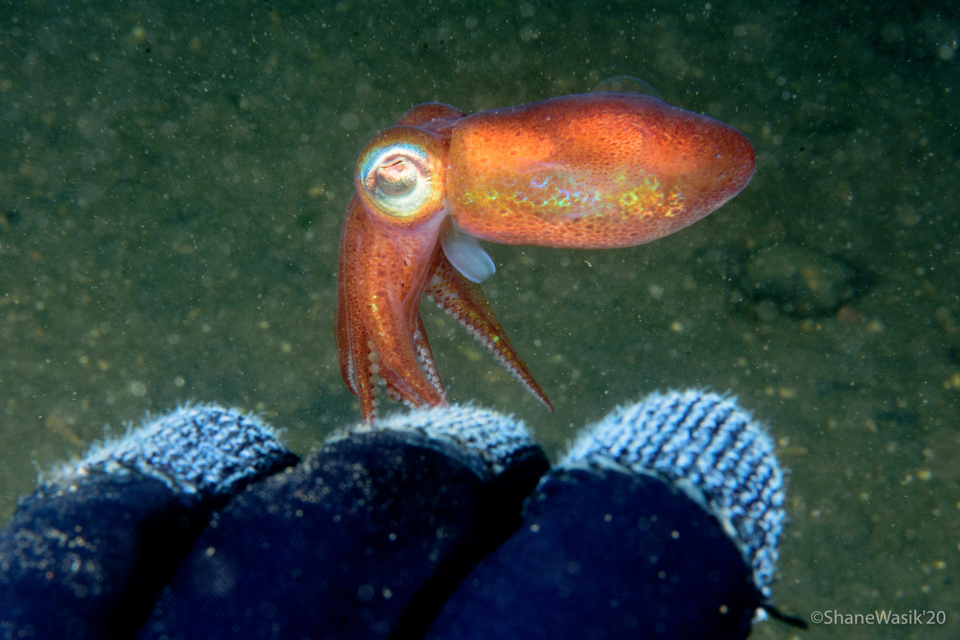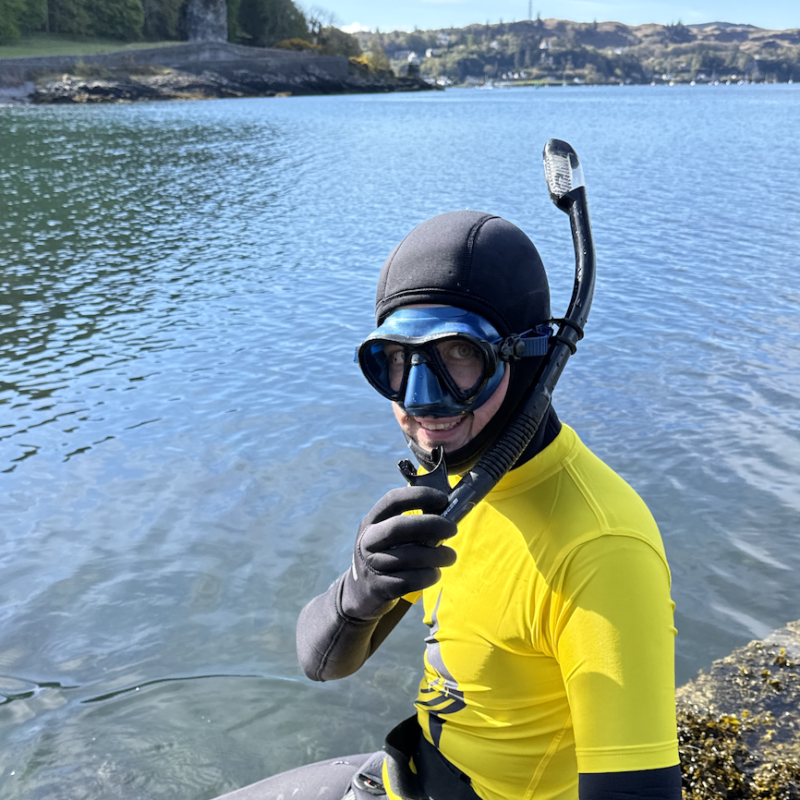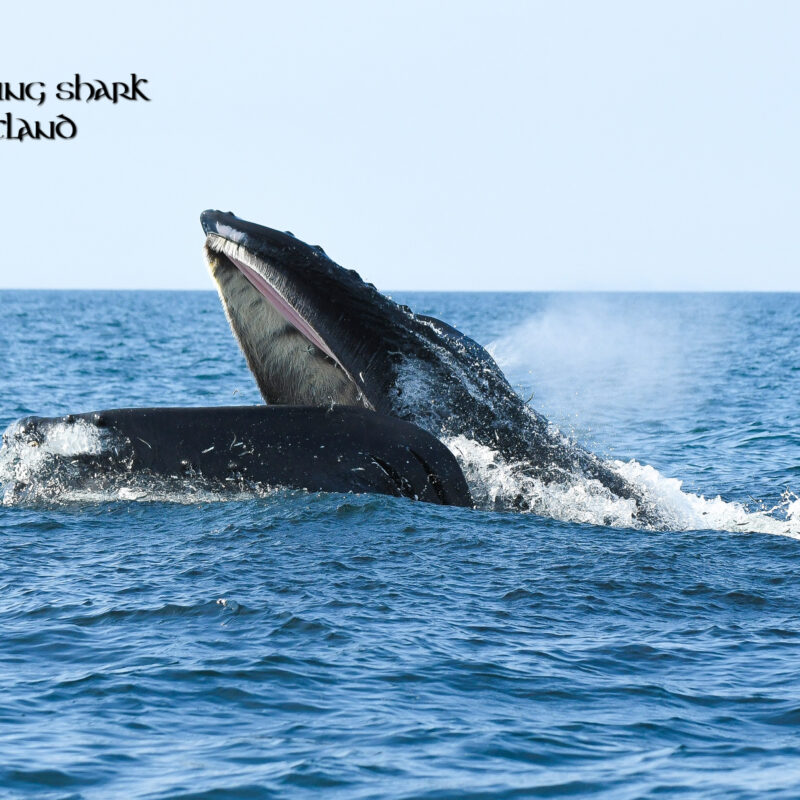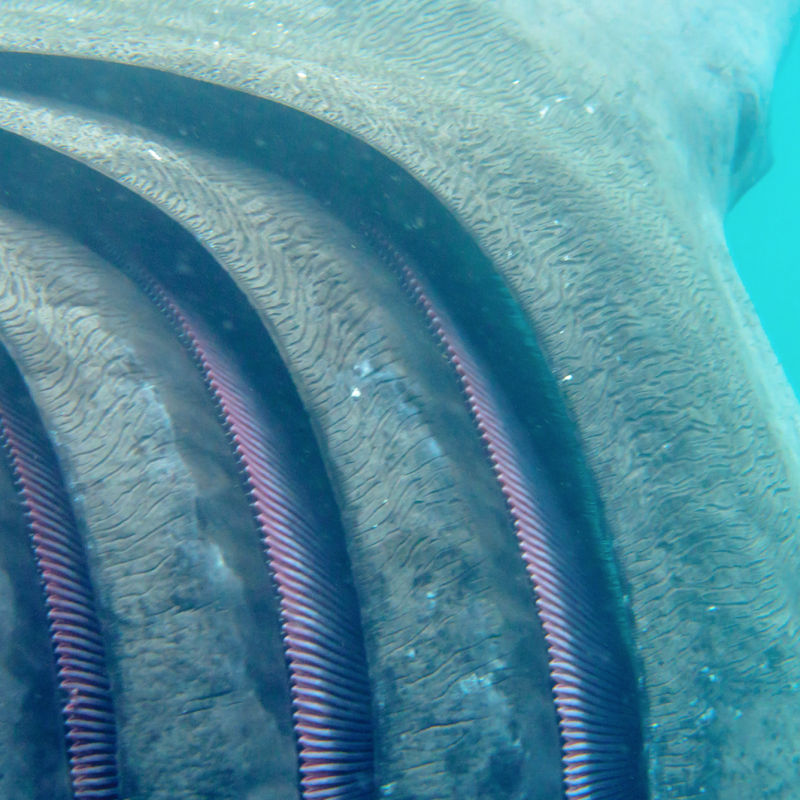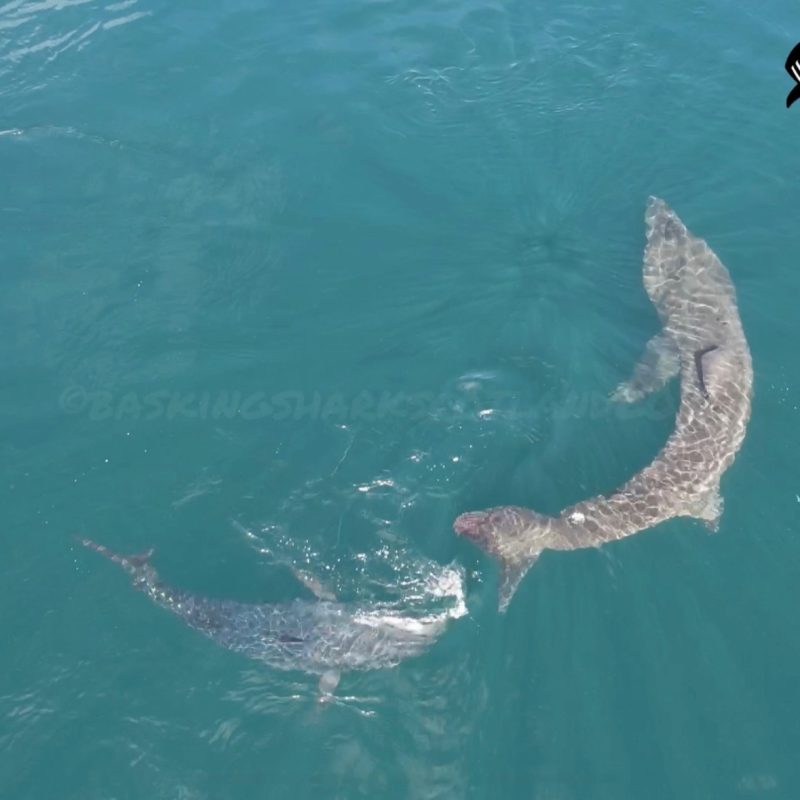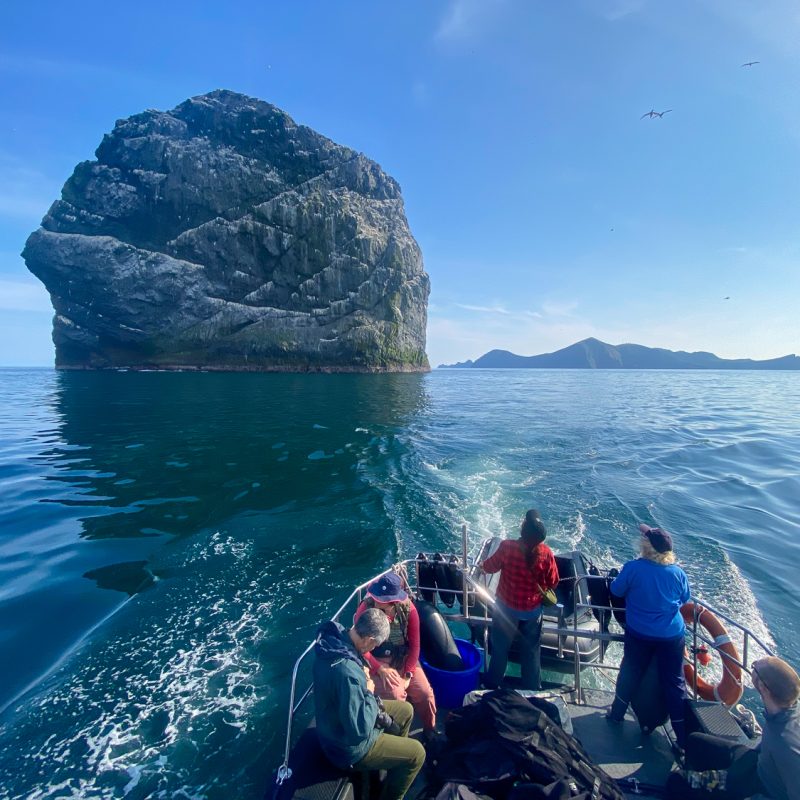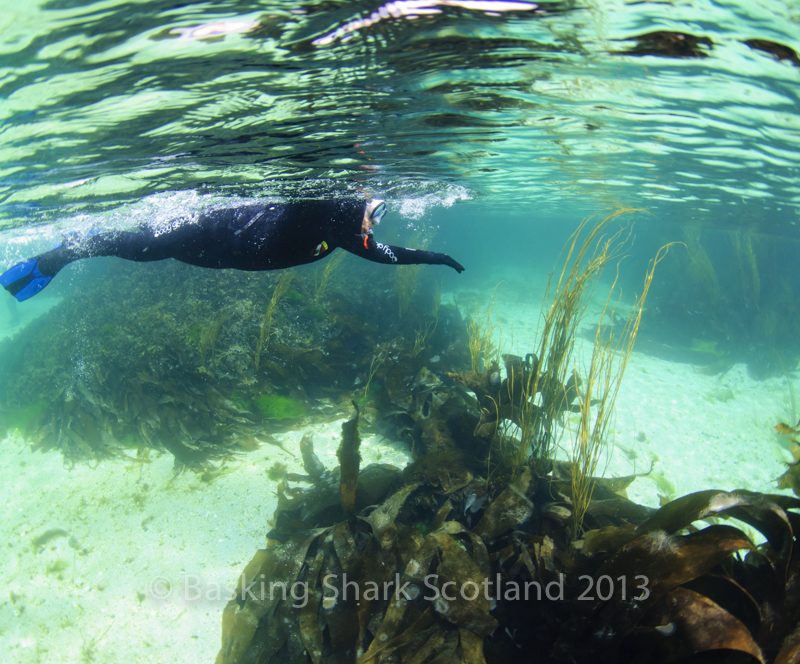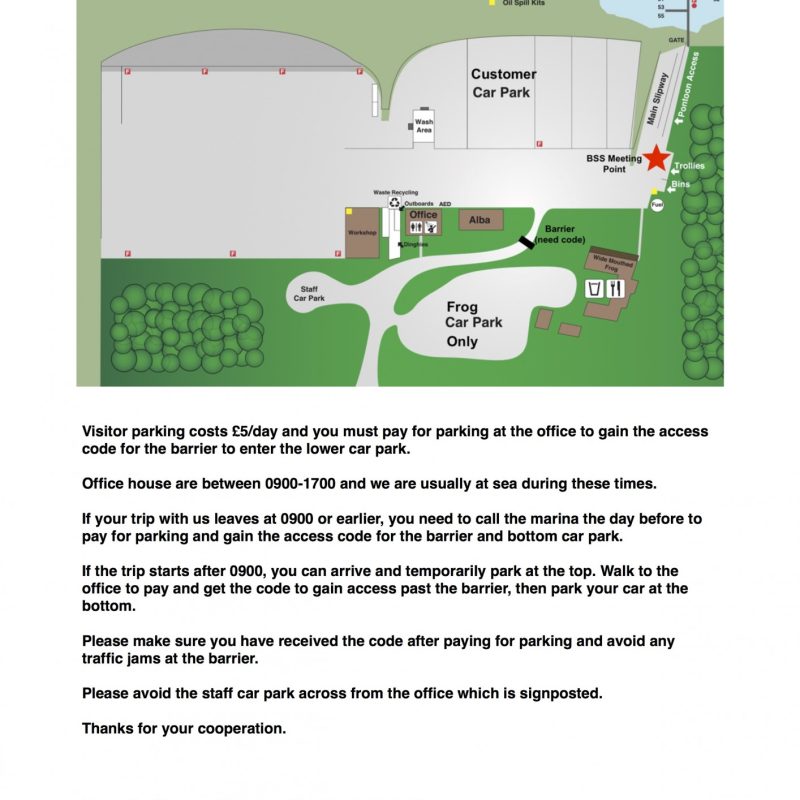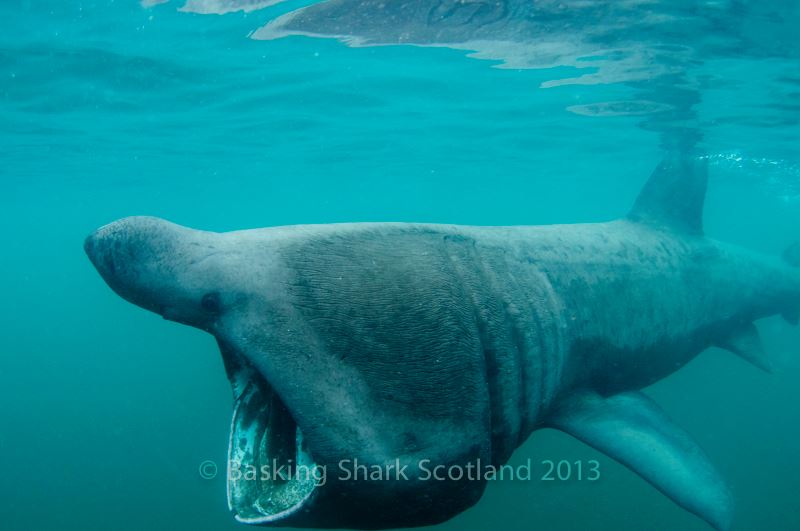
Underwater
Wildlife Guide
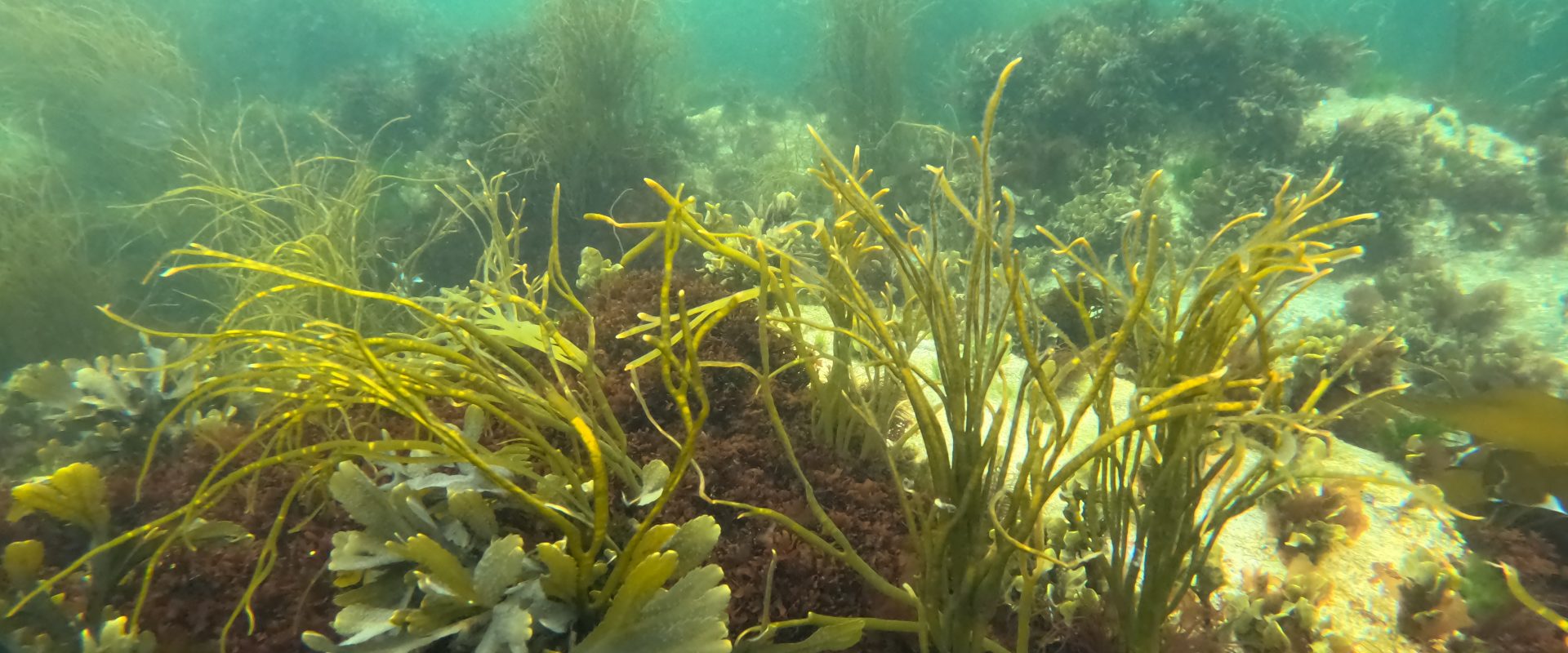
UNDERWATER HABITATS
Kelp Forest
Lamanaria digitata
Seagrass Meadows
Zostera marina
Seagrass meadows are formed by a species of flowering plant called eel grass. These beds form in sandy areas, offering structure and creating important nursery areas which host juveniles of many species of fish and more. These areas are one of the most productive on earth and are rich in biodiversity, but increasingly seagrass meadows are also being recognised as a vital carbon sink, capturing carbon up to 35 times faster than tropical rainforest!
Mermaids Tresses
Chorda filum
One of the great things about snorkelling around the Hebrides is the tidal channels which are lined with the well names mermaids tresses. They form another a secret garden type of view as they cover the surface and provide lots of shelter for juvenile fish. Drifting along with the current through these channels is one of our favorite parts to exploring in the ocean.
Open Atlantic Ocean
Cuan Mor
Another area that can initially seem like there is ‘nothing to see’. However floating over the deep ocean can bring about all sorts of weird and wonderful creatures. This is where we see lots of jellies, hydrozoans, salps, all with different colours and shimmering effects. It’s also where we see the mackerel schools feeding and also the basking sharks! Always lots to see from giant to tiny!!
Rocky Reefs
Below the kelp forest lies the rocky reef. With the light levels below the optimal for algae to grow, there is lots of habitats for all sorts of colourful marine life. Soft & hard coral, anemones, lots of crevices for fish & crabs/lobsters to hide. You need to be able to dive down a few metres below the kelp when snorkelling to explore this area.
Sandy Flats
At first glance, you might swim away from sandy flats as they seem uniform and lifeless. However you need to look a little closer as many of the creatures of more camouflaged. Lots of fish, crabs & starfish hunt in this area and also an area where we’re most likely to see catsharks & rays. Seals like to cruise out here as they have plenty space to watch us from a safe distance.
SPECIES GUIDE
Sand eels
Hyperoplus lanceolatus
Sand eels are a keystone species in the Hebrides and beyond. They form the basis of the food web that supports many of the iconic species we see here, from puffins to minke whales! We often see large schools of these long silvery fish swimming in shallow sandy areas – especially on our lagoon tours.
Deadmans Fingers
Alcyonium digitatum
You may not think of coral when you imagine snorkelling in Scotland, but dead man’s fingers is a common soft coral found in shallow depths around our coast! Look out for long orange-yellow structures which are actually a colony of individual animals. As they get bigger they begin to branch out, looking like fingers on a hand and earning them the name. When feeding, it has a feathery appearance as you see the polyps extending and catching passing plankton as it passes by.
Blue rayed limpet
Patella pellucida
Often overlooked, these vibrant little animals are found primarily on the fronds of kelp which they feed on during the spring and summer. Their semi-transluscent shells and electric blue markings glow when they catch the light as you swim over the canopy of the kelp forest. A popular wee shiny critter to spot.
Dragonet
Callionymus spp.
Dragonets are common bottom dwelling fish which are adapted for life on the seabed, with a flattened body and wide pectoral fins. They can grow to around 30cm but are often around 5-15cm. They rely on their camouflage to remain invisible on the sand but if you look closely you’ll start to notice them, and more and more will appear!
Velvet swimming crab
Necora puber
This intimidating looking crab is equipped with large powerful claws and bright red eyes, and is a common sight on stony bottoms and rocky ledges. It gets its name from the soft, greyish hairs on its carapace which give it a velvety feel, and from it’s rear legs which have flattened into effective paddles for swimming. It is a predatory species which is quick and capable of catching small fish, prawns, and other crabs so mind your fingers!
Snakelocks anemones
Anemonia viridis
Thriving in shallow brightly lit areas, this large anemone is a common find when snorkelling around our coastline. Their long, flowing tentacles contain a symbiotic algae which relies on sunlight, so they are often found living on or amongst the kelp and other seaweed. This makes them a welcome sight for snorkellers and a vibrant subject for photographers!
Pollack
Pollachius pollachius
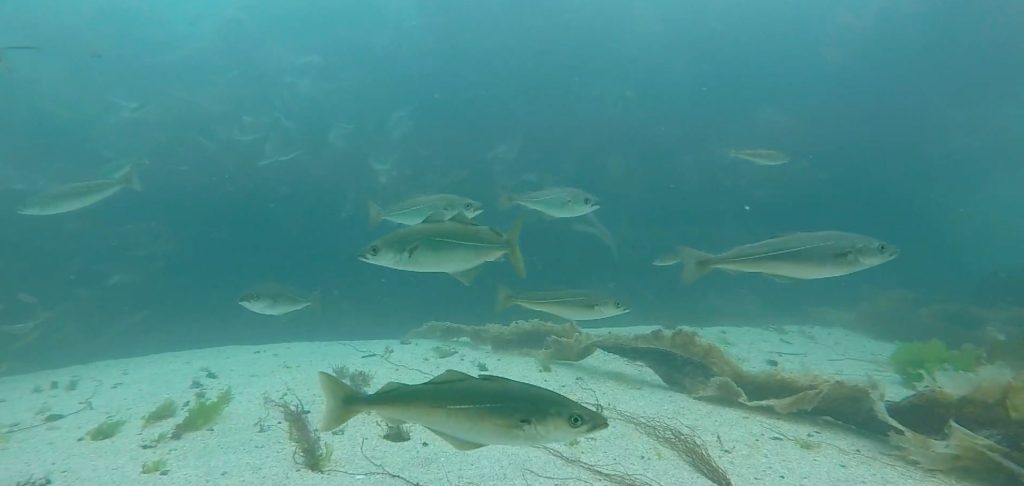
Decorator crab
Macropodia spp
These two genus, Macropodia spp. and Inachus spp., are known more commonly as decorator crabs as they ‘decorate’ themselves with algae and sponges as a form of camouflage. These small spindly crabs can be quite tricky to spot but if you look closely amongst the seaweeds and anemones you can find them foraging for food.
Edible Urchin
Echinus esculentus
There are multiple species of urchin in the UK but the most common is the edible urchin. This is a large pink-red urchin that can live for up to 10 years! It is covered in spines which are used for defence, but if you look closely you’ll see its tube feet extend from between these spines. Like starfish, one of their closest relatives, their mouth is found on the underside allowing it to slowly graze on algae as it moves along.
Nudibranch
Polycera
Nudibranchs are the colourful cousins of the snails and slugs we know on land. With over 100 species in our waters, they come in all shapes and sizes from just a few millimetres to over 10cm long. The most common species we find are polycera nudibranchs which feed on sponges that grow on the kelp. Their translucent-white and orange bodies provide a nice contrast on the kelp and make them relatively easy to find!
Sea Gooseberry
Pleurobrachia pileus
Sea gooseberries are ctenophores, not a true jellyfish but are often confused with jellyfish. As they move through the water column using tiny hair-like cilia, these refract the light and causes an effect that looks like shimmering lights moving down the edge of their body, and are another favourite when snorkelling! These are one of the more common species that is in search of zooplankton and can be found in huge blooms with 1000s of individuals.
Comb Jelly
Beroe cucumis
Not a true jellyfish but similar in appearance and behaviour, these planktonic animals are pelagic and spend their lives drifting through the water column in search of food. They have tiny hairs or cilia lining their body which they can use to move towards prey, before engulfing it whole. These cilia create a refractive phenomenon when hit by light, and it looks like the edges of the comb jelly are being illuminated by tiny LEDs!
Jellyfish
Cyanea capillata
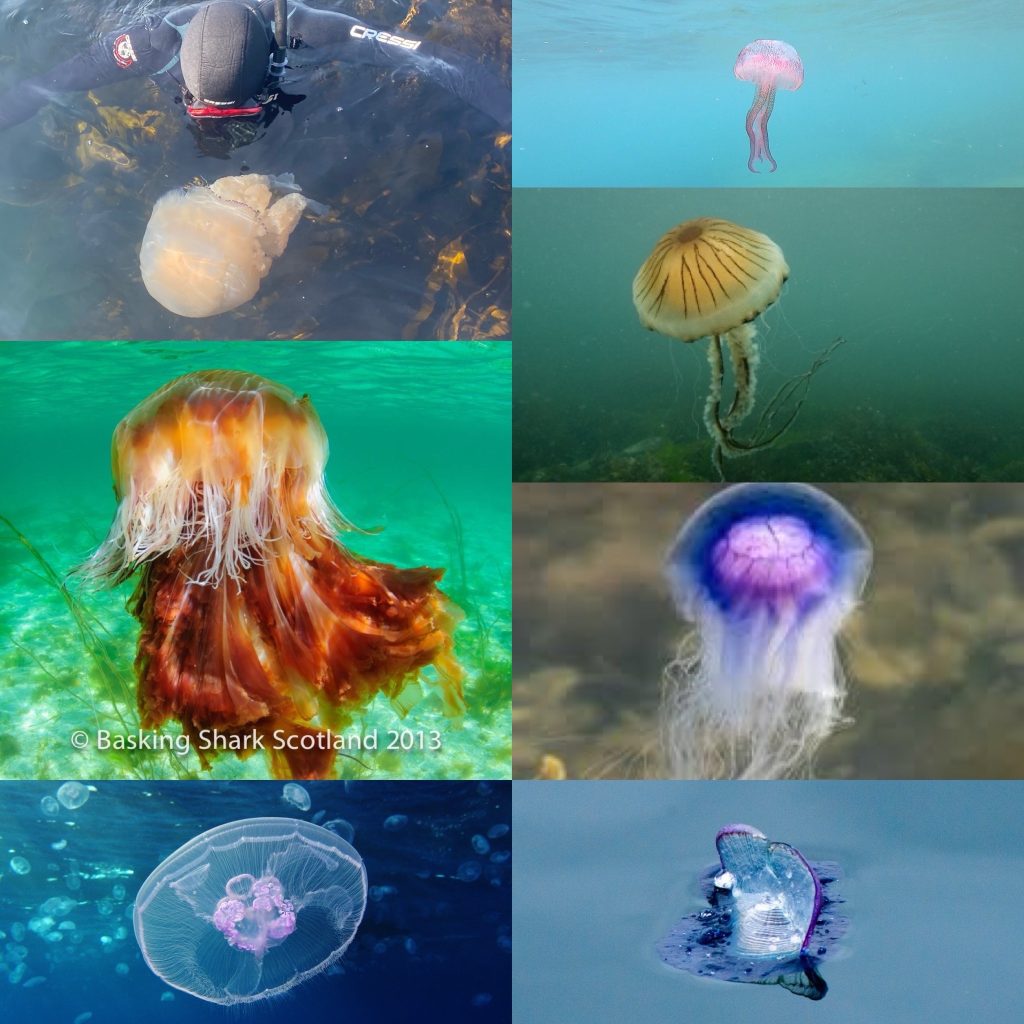
Greater Pipefish
Syngnathus acus
The pipefish is one of the closest relatives of the the seahorse, looking like a stretched out seahorse with the same characteristic elongated snout. They rely mainly on their camouflage, imitating pieces of seaweed so are often overlooked. There are multiple species found in the Hebrides but the greater pipefish is the biggest and most visible, growing to lengths of 45cm.
Plumose anemone
Metridium dianthus
Plumose anemones are the tallest anemone we have and can grow up to 30cm . Usually white and orange they can grow extensively on rocky surfaces and give a explosion of colour. They use their tentacles to feed in the current and can almost retract when the current subsides.
Starfish
The UK is home to many species of starfish, each unique in its appearance and habitat, like the common sunstar with 13 arms or the bright purple bloody henry! Around our common snorkel sites you can hope to see spiny starfish hiding in rocky crevices, common starfish on shallow sandy bottoms, and sunstars below the canopy of kelp.
Painted Topshell
Calliostoma zizyphinum
A colourful sea snail often found on the kelp fronds. It’s distinctive pink, yellow & white bands make it stand out to snorkellers when swimming around the kelp forest. They feed on algae which includes what grows on their own shell so they always look shiny!
15 spined stickleback
Spinachia spinachia
We often see this fish around the surface layers hiding around the kelp forest, mermaids tresses and seaweed gardens. Their long snout and fin shape gives them a seahorse like appearance and a popular fish to spot whilst snorkelling.
Stalked Jellyfish
Calvadosia campanulata
This obscure looking alien like creature is another popular spot found by curious snorkellers. Usually found hanging onto the kelp or seagrass with their umbrella bell waving the tentacles in the current. Again, another species called a jellyfish but not actually a true jellyfish and are sedentary.
Wrasse
Labrus bergyltaW
Wrasse are a colourful reef fish, again found most often around the kelp forest. There are a number of different species that we see whilst snorkelling and they can be curious. Another fish that provides a nice photographic subject.
Mini Brain!! (anthomedusa)
Neoturris pileata
These alien looking creatures is what we nickname ‘mini-brains’. They are found floating around the surface and looks like a jelly with a red brain pulsating in the middle. They are actually a Hydroid, so different to a jellyfish but have similarities. Confused? Call them a mini-brain and have a good look at the amazing weirdness!
Long Spined Scorpion Fish
Taurulus bubalis
A colourful and intimidating looking fish but usually static hiding in the reef and tolerant of photographers. They have a fearsome name but unlike similar fish in warmer waters, they are not venomous.
Hermit Crab
Pagurus bernhardus
Hermit crabs are another popular critter. They are always easily seen by snorkellers as they keep busy scurrying around in their mobile homes. There can be areas with literally hundreds of them and it’s fascinating to watch their behaviour. They can use a variety of shells so they can be all shapes and sizes.
Devonshire Cup Coral
Caryophyllia smithii
This colourful creature looks a bit like an anemone but is actually a hard coral! They have up to 80 tentacles and can be a range of vibrant colours. They grow on rocky surfaces and can be found as shallow as rockpools.
RARER SIGHTINGS
Thornback Skate
Raja clavata
The thornback skate is a species similar to sharks and spends almost its entire life on the seabed, feeding on crustaceans and occasionally fish. This species is most active at dusk and will cover itself in sediment as it rests during the day, making it quite tricky to spot as a snorkeller.
Small spotted catshark
Scyliorhinus canicula
Formerly known as dogfish, these bottom-dwelling sharks are a rare sight when snorkelling in the Hebrides. Growing to lengths of 1 metre. they are normally found resting on sandy or rocky bottoms. More commonly you can find their egg cases known as a mermaid’s purse washed up along the shoreline.
Squid
Loligo spp
Curled Octopus
Eledone cirrhosa

Masters of camouflage, the curled octopus is able to change colour and shape, and due to its lack of bones it can squeeze into narrow gaps and small crevices. This is the only species of octopus found in the Hebrides and although relatively common, it’s behaviour makes it difficult to spot – but you can tell an octopus has been nearby when you see the remains of crabs on the sand!
Mackerel
Scomber scombrus
If you’re lucky enough to time it right to jump into a bait ball of feeding mackerel then you’re in for a big treat. Mackerel migrate to our shores through summer and can form huge shoals which makes the ocean boil at the surface. Another amazing spectacle from the summer in the islands.
Little Cuttlefish
Sepiola atlantica
Usually seen at night and more often when diving, however they can be seen around the sandy flats and edge of rocky reefs around low water when snorkelling. We have two species which are often confused, little cuttlefish & bobtail squid. Cuttles are small, up to 5cm and bobtails up to 15cm so a rough way to tell is on size.
They are masters of camouflage and usually you won’t spot them until they are escaping and jet off. They can hover in the water column allowing us to watch them for a while. They are nocturnal hunters and feed on small crustaceans like shrimps so can even be found caught in rockpools after hunting their prey.



